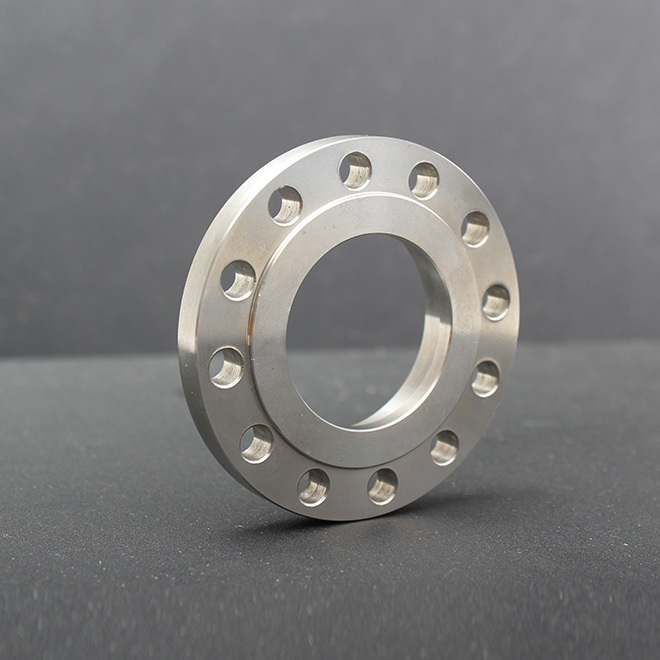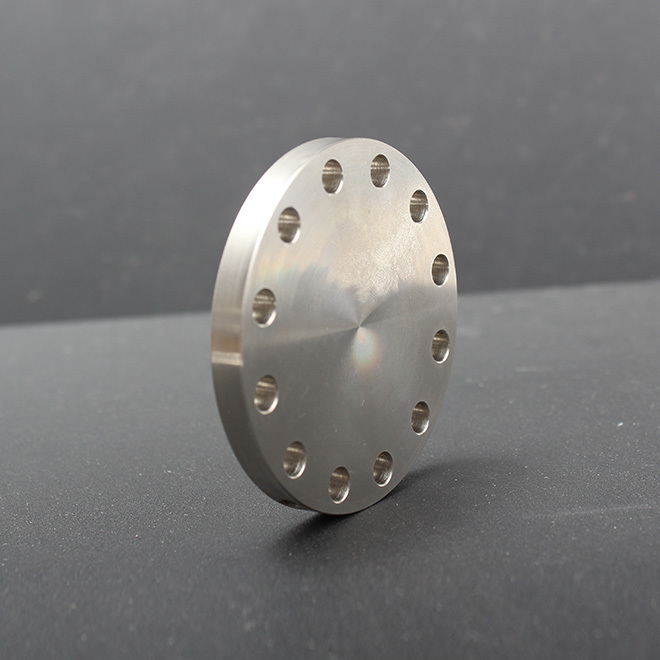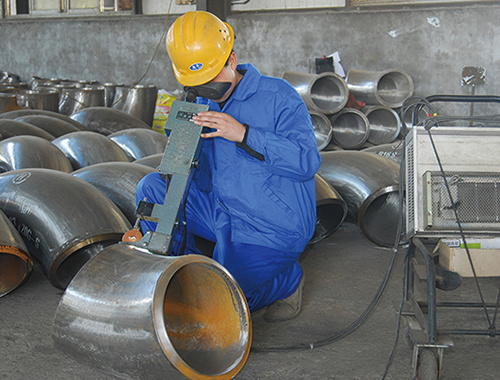Innovative Solutions: Short Radius Elbows for Efficient Piping Systems
2025-03-03
Innovative Solutions: Short Radius Elbows for Efficient Piping Systems
In the ever-evolving landscape of construction and plumbing, **short radius elbows** have emerged as a pivotal solution for enhancing the effectiveness of piping systems. These components not only optimize space but also significantly improve the flow characteristics within pipelines. As industries continue to demand more efficient and cost-effective systems, understanding the benefits and applications of short radius elbows is essential for professionals in the field.
Table of Contents
- 1. Introduction to Short Radius Elbows
- 2. What are Short Radius Elbows?
- 3. Types of Short Radius Elbows
- 4. Benefits of Using Short Radius Elbows
- 5. Applications of Short Radius Elbows in Various Industries
- 6. Installation and Maintenance of Short Radius Elbows
- 7. Conclusion
- 8. FAQs
1. Introduction to Short Radius Elbows
Short radius elbows are crucial components in piping systems designed to change the direction of fluid flow. These elbows are characterized by a smaller radius, typically equal to the diameter of the pipe, allowing for tighter bends compared to long radius elbows. Their compact design makes them particularly suitable for applications where space is limited, and they play a vital role in optimizing the arrangement of piping in various installations.
2. What are Short Radius Elbows?
Short radius elbows are designed for quick directional changes, ensuring minimal resistance to the flow of liquids and gases. By forming a 90-degree angle with a radius equal to the pipe diameter, these elbows facilitate smooth transitions. The ability to navigate tight spaces makes them an ideal choice for complex piping layouts, where maintaining efficiency is paramount.
Understanding Flow Dynamics
In fluid dynamics, the path of least resistance is crucial. Short radius elbows, with their sharp turns, help in achieving this by minimizing turbulence and promoting a steady flow. However, while they are effective in many scenarios, it is essential to assess their impact on overall system efficiency based on the specific application.
3. Types of Short Radius Elbows
There are several types of short radius elbows available, tailored to meet specific needs in various applications. Understanding these options ensures that professionals can make informed decisions when selecting components for piping systems.
3.1 90-Degree Short Radius Elbows
The most common type, **90-degree short radius elbows**, are widely used in residential and commercial plumbing systems. They allow for a quick change in direction, making them ideal for tight spaces.
3.2 45-Degree Short Radius Elbows
**45-degree short radius elbows** provide a gentler turn compared to their 90-degree counterparts. This type is often used when a less abrupt change in flow direction is desired, helping to reduce potential pressure drops.
3.3 Custom Short Radius Elbows
For unique installations, **custom short radius elbows** can be manufactured to meet specific requirements. These elbows can be designed in various angles and diameters, ensuring compatibility with specialized systems.
4. Benefits of Using Short Radius Elbows
Integrating short radius elbows into piping systems offers several advantages that can enhance overall efficiency and performance. Understanding these benefits can help professionals optimize their designs.
4.1 Space Efficiency
One of the primary benefits of short radius elbows is their ability to fit into confined spaces. Their compact design allows for efficient use of available area, which is often a critical consideration in urban construction and renovation projects.
4.2 Enhanced Fluid Flow
Short radius elbows are engineered to facilitate a smooth transition in direction, reducing flow resistance and enabling better fluid dynamics. This results in more efficient systems that require less energy to operate, ultimately lowering operational costs.
4.3 Cost-Effective Solutions
By minimizing the number of fittings and maximizing the efficiency of piping layouts, short radius elbows can significantly reduce material and installation costs. Their compact nature allows for faster installation, reducing labor costs and project timelines.
4.4 Versatility
Short radius elbows are versatile components that can be used in various applications, from residential plumbing to industrial processes. Their adaptability makes them suitable for a wide range of materials, including PVC, steel, and copper.
5. Applications of Short Radius Elbows in Various Industries
Short radius elbows find applications across multiple industries, making them an indispensable component in modern piping systems. Here, we explore some key sectors where these elbows excel.
5.1 Residential Plumbing
In residential settings, short radius elbows are commonly used in drain-waste-vent (DWV) systems. Their ability to navigate tight spaces and easily connect to various piping sections makes them ideal for home plumbing installations.
5.2 Industrial Manufacturing
In the industrial sector, short radius elbows are utilized in process piping systems. Their efficient design helps maintain fluid integrity in manufacturing processes, including chemical, food, and beverage production.
5.3 HVAC Systems
Heating, ventilation, and air conditioning (HVAC) systems benefit from short radius elbows, which help manage airflow efficiently. Their use in ductwork can enhance system performance while minimizing energy consumption.
5.4 Oil and Gas Industry
In the oil and gas sector, short radius elbows are critical for connecting various components while managing high-pressure systems. Their durability and efficiency make them suitable for harsh environmental conditions.
6. Installation and Maintenance of Short Radius Elbows
Proper installation and maintenance of short radius elbows are crucial to ensure their longevity and optimal performance. Understanding best practices can help minimize issues down the line.
6.1 Installation Guidelines
When installing short radius elbows, ensure that the pipe ends are clean and free of debris. Use appropriate fittings and adhesives compatible with the pipe material. It is essential to follow manufacturer guidelines to ensure a secure and leak-free connection.
6.2 Maintenance Tips
Regular maintenance checks can help identify potential issues early. Inspect for signs of wear, corrosion, or leaks, and address concerns promptly. Maintaining a clean system will also enhance flow efficiency and prolong the life of short radius elbows.
7. Conclusion
Short radius elbows represent an innovative solution for modern piping systems, offering space efficiency, enhanced flow dynamics, and cost-effective options across various industries. As construction and plumbing continue to advance, these components will play a critical role in optimizing piping layouts and meeting the demands of contemporary applications. By understanding their benefits and applications, professionals can leverage short radius elbows to create efficient and reliable systems that stand the test of time.
8. FAQs
8.1 What materials are short radius elbows made from?
Short radius elbows can be constructed from various materials, including PVC, stainless steel, carbon steel, and copper, depending on the specific application and requirements.
8.2 How do I choose the right elbow for my piping system?
Choosing the right elbow depends on factors such as the type of fluid being transported, pressure requirements, space constraints, and the overall design of the piping system.
8.3 Can short radius elbows be used in high-pressure applications?
Yes, short radius elbows can be used in high-pressure applications, particularly when made from robust materials such as stainless steel or carbon steel. It is essential to verify compatibility with the specific pressure and temperature conditions of your system.
8.4 What are the disadvantages of using short radius elbows?
While short radius elbows offer many advantages, they can create higher turbulence and pressure drops compared to long radius elbows. It is crucial to assess their suitability based on the specific flow characteristics of your application.
8.5 How can I ensure the longevity of short radius elbows?
To ensure the longevity of short radius elbows, proper installation, regular maintenance checks, and cleanliness of the system are essential. Identifying and addressing issues early can help prolong their service life.
short radius elbow
RELATED NEWS
Understanding JIS 5K Flanges: A Key Component in Construction and Decoration
2025-04-05
Essential Features of Carbon Steel Blind Flanges You Should Know
2025-04-02
Understanding Butt Welding Pipe Fittings: A Comprehensive Guide
2025-03-30





